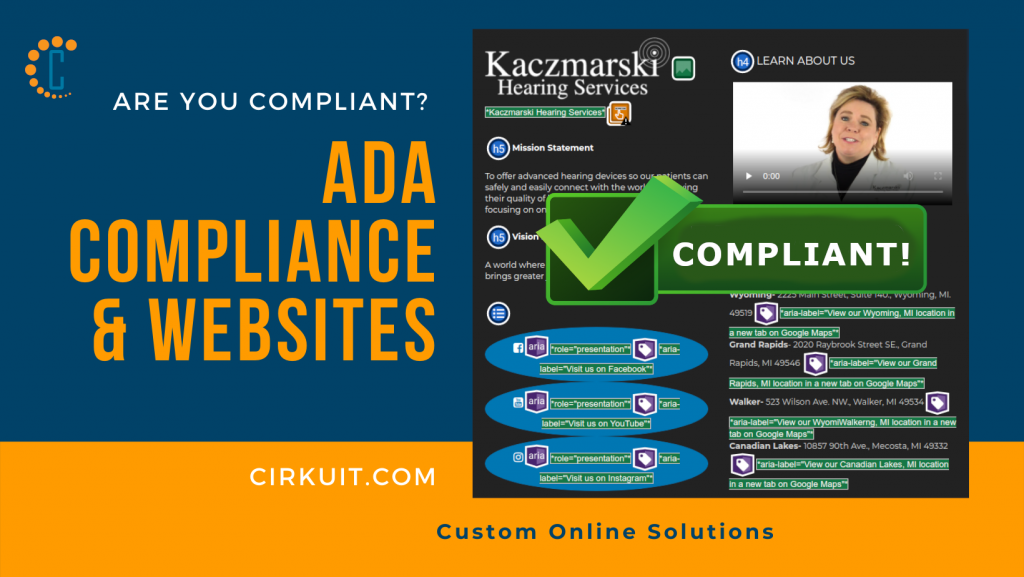
Websites and ADA Compliance
The Americans with Disabilities Act (ADA) is the federal law that governs accessibility for those with disabilities. In essence, the ADA prohibits disability discrimination in places of public accommodation. The ADA requires businesses to meet specific standards. Standards like providing “full and equal enjoyment of the goods, services, facilities, privileges, advantages, or accommodations of any place of public accommodation”.
Despite the lack of the word “website” appearing in the text of the ADA, courts have interpreted the text to include websites. Courts view websites and mobile apps as “places of public accommodation”.
Therefore, businesses that operate online must make their websites accessible to those with disabilities. If they don’t, they can be accused of discriminating against people with disabilities. Above all, businesses need to design their websites so that everyone, including people with disabilities, can enjoy “full and equal” use of the website.
Website Compliance and Web Content Accessibility Guidelines (WCAG) 2.1 AA requirements.
Basically, ADA website compliance comes down to making sure your website conforms with the Web Content Accessibility Guidelines (WCAG) 2.1 AA requirements. This includes ensuring access to content, ability to navigate the website successfully without a mouse and visual cues, and ability to engage with different elements.
Web-based businesses are increasingly being swept up in ADA compliance lawsuits. In 2019, over 11,000 federal lawsuits filed regarding ADA Title III. California, New York, and Florida have the most stringent ADA requirements. The vast majority of lawsuits have been happening there.
By default, Cirkuit follows general best practices for coding websites. In addition, many of the traditional SEO techniques we use meet many ADA requirements- such as alt text on images, the use of proper heading tags, and using a consistent information architecture and structured/tiered website pages.
Since our clients’ websites are optimized with traditional SEO techniques, they are off to a strong start regarding ADA compliance.
There are many automated tools that cover only a small portion of potential issues. We caution using automated tools, automated solutions, or purchasing accessibility audits. In general, a manual fix by a developer is most likely the best and most cost-effective path forward.
As in recent years, we anticipate ADA cases alleging the inaccessibility of websites and mobile apps to rise. Keep an eye on the Eleventh Circuit. The Court is going to issue its decision in the Gil v. Winn Dixie appeal. As a result, the decision may provide guidance on whether WCAG should be the legal standard for accessible public accommodations.
Finally, we encourage online businesses to be proactive, like our client Kaczmarski Hearing Services, and ensure your website is ADA compliant. For a quote, contact our web developers.
[…] Related Articles: What Does ADA Compliance Mean for Websites? […]